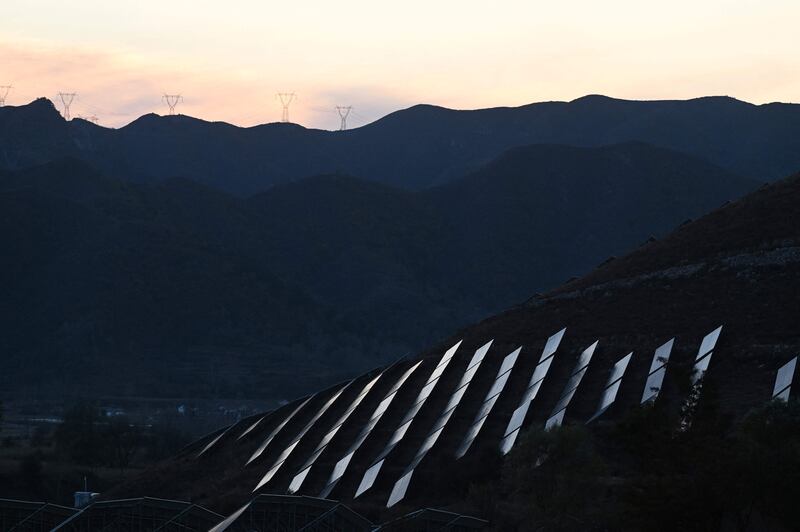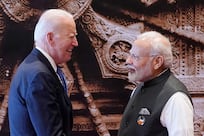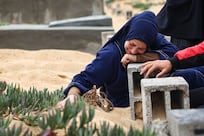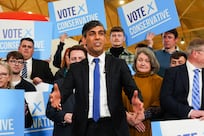At the start of 2021, I said that renewable energy had a big year ahead. Now, as we reach the end of the year, this has turned out to be something of an understatement – although, it is easy to be wise after the event.
As we stand on the precipice of 2022, and face down the possibility that we rather might be about to enter ‘2020 two’, we must double down on the commitments, pledges and actions taken in this extraordinary year to ensure that we pragmatically transition to a world powered by renewable and clean energy solutions.
The last 12 months have tested the reserves of human innovation and tried the resilience of the renewables sector in equal measure. Both have come up trumps. And both – humanity and renewable energy – must move forward, hand in hand, drawing strength and support from each other to forge a more sustainable future for all.
From the US rejoining the Paris Agreement to a burst of net-zero strategies from the Gulf states, through to the UNFCC’s selection of the Emirates to host Cop28 in 2023, it has been a year that has delivered on some key promises. At the same time, it has also seen leaders, governments and industries demonstrate a critical awareness that so much more still needs to be done if we are to “keep 1.5 alive” – that is, preserve the goal of no more than a 1.5ºC temperature rise, as the slogan of Cop26 in Glasgow said.
We should enter the new year not with fear or trepidation, but with confidence and optimism. A brief review of what we achieved in the face of unprecedented adversity should show why.
Despite the seismic impact of the pandemic, our world got greener and more efficient, as renewable energy stepped up to the plate. Industry got cleaner. Technology got smarter. Climate action became more urgent.
Across, 2021 we’ve seen electricity generated from solar panels, wind turbines and other renewable sources accelerating faster than ever, across the world. The latest findings from the International Renewable Energy Agency (Irena) show that 2021 could set a new all-time record for the number of new global renewable energy installations.
In fact, current projections show that newly installed renewable energy capacity is set to reach almost 300 gigawatts this year – up from 260 in 2020, which set the record at the time.
Last year, more than 80 per cent of all new electricity capacity was renewable, with solar and wind accounting for 91 per cent of new renewables. In the next five years, we are looking at 95 percent of all new electricity capacity coming from renewable solutions.
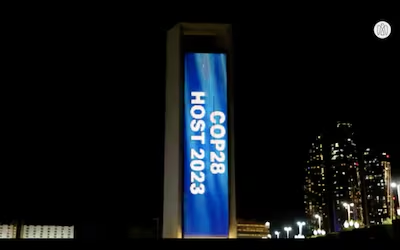
These numbers are revealing. After almost two years of adjusting to the new demands placed on society by the pandemic, it has both exposed the deeply entrenched vulnerabilities of the current energy system, and served as a wake-up call to any leader who has been sleepwalking their way into this climate crisis.
Now, as governments face the complicated balancing act of controlling the health emergency while introducing major stimulus packages, we must have an eye on the future. We must align the short-term interests of overcoming a fresh wave of Covid-19 with the long-term goals of the Paris Agreement.
This is progress and reason to be cautiously optimistic that the transition we desperately need is underway. I say “cautiously” because we know two things for certain.
First, deployment of renewable solutions across key industrial sectors must accelerate if we are to achieve net-zero emissions by the middle of the century. Second, the global energy transition must be inclusive and equitable.
This second point is a message that cannot be emphasised enough. One of the real highlights of Cop26 this year was seeing leaders like Barbados’s Prime Minister, Mia Mottley, shift the climate action spotlight onto small island and developing states.
Her message that “no one is safe until everyone is safe”, though rooted in the global response to the pandemic, is one that should have applied to the climate crisis long before the virus emerged. It is for this reason that initiatives like the Energy Transition Accelerator Financing Platform are critical. Launched by the UAE and Irena at Cop26, the platform aims to secure up to $1 billion in funding to accelerate the transition to renewable energy in developing countries by financing 1.5 gigawatts of new renewable energy by 2030. The power of partnerships must be harnessed. Because no one is safe until everyone is safe.
So, what should we expect to see in 2022? In three words: partnerships, technology and finance.
Whether it’s green hydrogen technologies under the UAE Green Hydrogen Leadership Roadmap, pioneering partnerships in the joint US-UAE AIM for Climate (AIM4C) initiative, or investing in the talent, the youth and – as my previous writings in these pages have emphasised – the women who will lead the way to realising the UAE’s Net Zero by 2050 Strategic Initiative, balancing these priorities will be critical to navigating towards a greener 2022 successfully.
